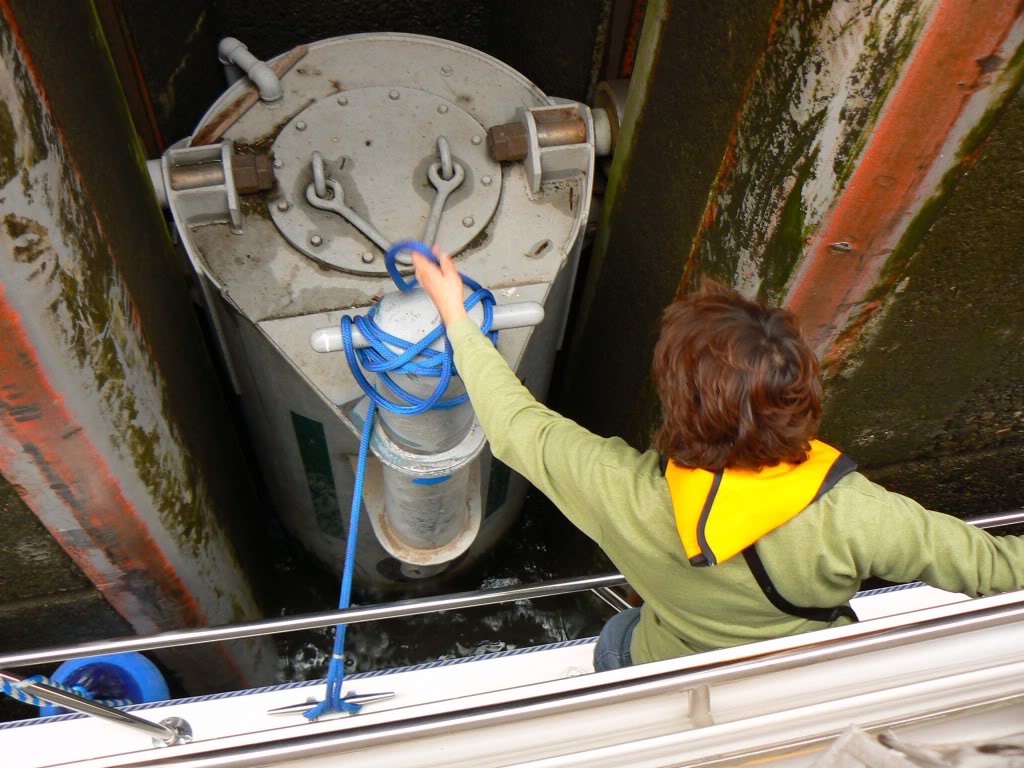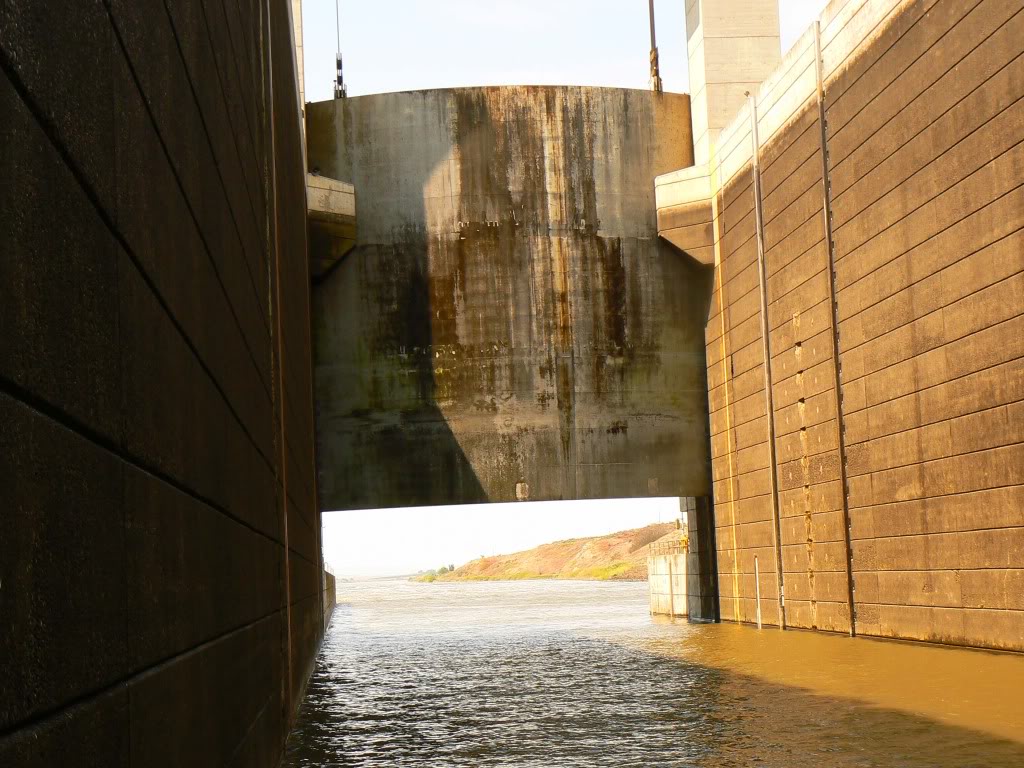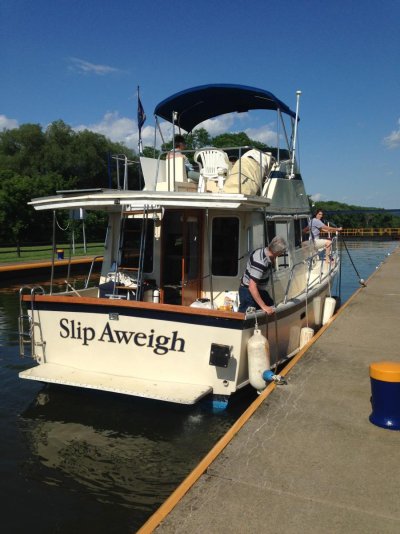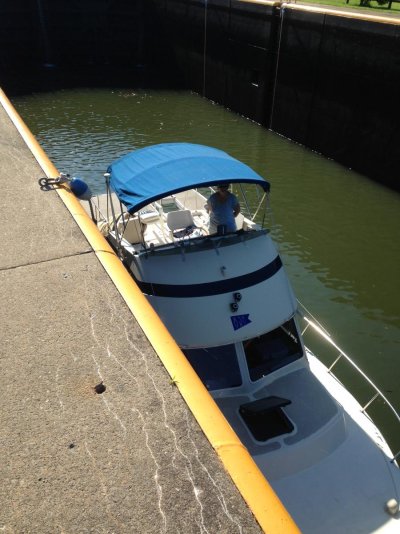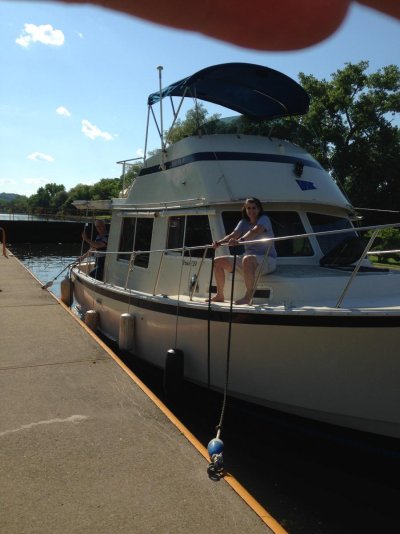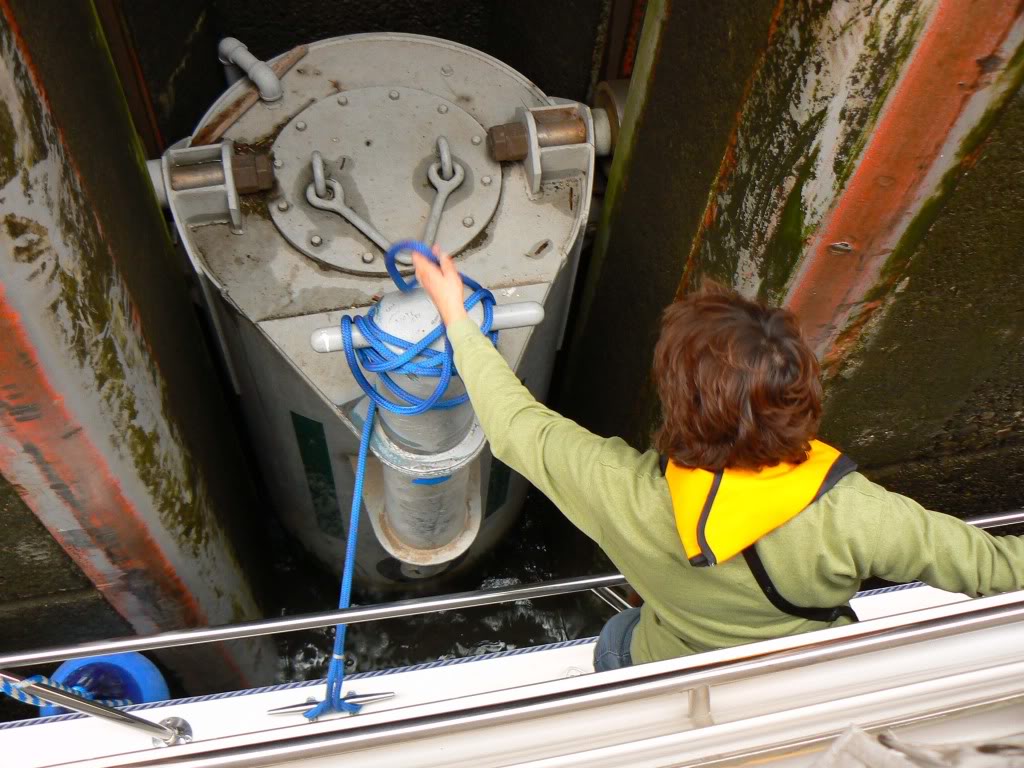Erie Canal
Haven't done the Miss or Tentom. But the Erie Canal is older, smaller and (sad to say) more chewed up around the edges. From MY experience the Erie will be about 30 locks rising (westbound) and 4 dropping. The ones you rise in will end up BELOW your Gunnel. So the flybridge idea won't work. You will be WAY too high to be able to keep the boat some what tight against the wall. In retrospect, it will work, but only until you are above the lock wall. Then you will lose the leverage to hold you in against the wall. By then it will be too cumbersome to re rig another line. In the Erie most of the locks have a combination of wires, and free hanging lines to use. Some have a top to bottom pipe to slide a line around, and 'slip' up and down. BUT as you rise up the line will be going DOWN over the side a foot (maybe more) depending on your freeboard. If you make it fast on your boat it will jam up. You will see the plastic coated cables and 3" (or so) pipes you can use to put a two part line around and slide up or down. BUT, these cables and pipes end below the top of the wall. And some will jam your riding line fast. And quick too.
Since you will be going UP in the Erie Canal mostly the lines will be getting slack. so you will have to actually handle them (keeping them taut) If there is no other traffic in the lock or few, the lock masters won't care if you move up, down or sideways (much) But, if there's a filled lock they wont want you to move at all. Depends on time and weekend. The problem with the lines is they all end on the edge of the locks. so as you go above the lock wall they start leading down. So you can never absolutely just tie them off. The good news, it only takes 10 minutes (or so) to transit a lock.
One issue in the Erie. Some of the lock walls are in terrible shape. With deep depressions, eroded concrete, and steel pins sticking out. You will need two large polyballs for FWD and AFT fenders. Especially if you have a lot of overhang (flare of the bow) Stern not so much on your boat. My normal fenders a couple of times actually did not hold me off, when the fenders went into one of the eroded depressions.
The other thing to remember to do, after the lock rinse off the fenders. The accumulated cement debris, and growth sticks to the fenders. Then the next lock as you 'roll' into the lock the cement, growth gets mashed into the topsides. At least rinse them off every other lock.

